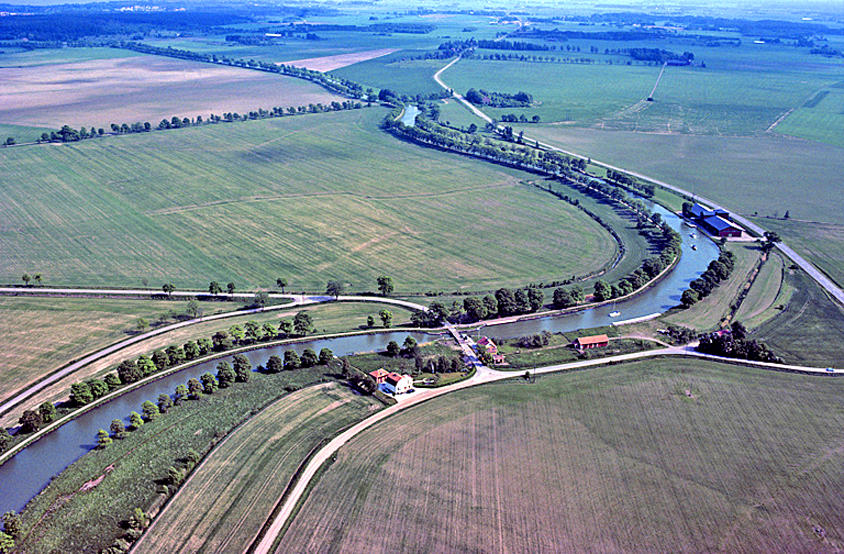Göta kanal is a navigable canal in Sweden that connects Lake Venern with the Baltic Sea.
The Göta Canal is a canal built in the early 19th century. It crosses the south of the country, from Gothenburg on the west coast, along the Göta älv river and the Trollhättan canal, then through the great lakes Vänern and Vättern, parallel to the Motala Ström, to Söderköping on the Baltic Sea.
The total length is 190 kilometers, of which 87 kilometers are laid along an artificial channel. There are 58 gateways on the canal.
Designed by architect Baltzar von Platen, its construction began in 1810 and was opened to the public in 1832. The work involved 58,000 workers, including conscript soldiers from 16 Russian regiments and prisoners of war. After 40 years, the Göta canal lost its importance when it was overtaken by rail as a means of transporting goods. But it continued to make a profit until 1910, when modern motoring completely removed its role as a means of transport. Nowadays, it is a renowned tourist attraction, being trafficked by pleasure boats and tourist ships.
Access : Coordinates: / The Göta Canal is a navigation canal, in southern Sweden, which runs through the provinces of Ostrogotia and Western Gotia , from Mem (municipality of Söderköping), in the Baltic Sea,
Highlights :
- In combination with the Trollhätte canal, it allows you to travel by boat, from Gothenburg to the Baltic Sea, and completing the maritime route through the Södertälje canal, to reach Stockholm, the capital, thus linking the two largest cities in Sweden, reducing the route through sea, about 900 km, 590 km.
- Route : It has a total length of 190.5 km, of which 28 km are the crossing of Lake Vättern, 25 km the passage of Lake Roxen, and 87 km are of artificial excavation channel. It runs through the municipalities of Söderköping, Norrköping, Linköping, and Motala, in the Province of Östergötland and Karlsborg, Töreboda, and Mariestad, in that of Västra Götaland.
- The Göta Canal was included in the List of International Historic Civil Engineering Landmarks by the American Society of Civil Engineers in 1998.
- Pleasure boats and canal boats operate on the canal. The most famous canal ships include Juno, Diana and Wilhelm Tham. The Juno was put into service in 1874, making it one of the oldest passenger ships in service in the world.
- Bergs slussar, outside of Linköping, is a tourist destination and the biggest attraction of the Göta Canal.
- There are also two aqueducts along the canal one in Ljungsbro and one outside Borensberg.In addition to the many road and rail overpasses, there are 58 locks, of which the majority, 37, are located between the Baltic Sea and Lake Vättern, over a 92.2 km route. The point where the greatest unevenness is saved is Berg, where, in a section of less than a thousand meters, there are 11 locks, with 14 gates, 7 of which are contiguous. These locks, named after Carl Johans, in honor of the king with whom the work was completed, bridge an 18.8 m drop.
- The channel is sometimes referred to as “the Blue Ribbon of Sweden”or sometimes is ironically called the “divorce ditch”.The canal allows the transit of vessels 30 m long, 7 m wide, 22 m high at the mast and 2.82 m deep.
Go next : Borensberg , It is located 15 km east of Motala next to the Geta Canal and Lake Boren / Bergs locks. One of the Göta Canal’s largest tourist destinations. One mile northwest of Linköping is the lock area called Berg’s locks.

